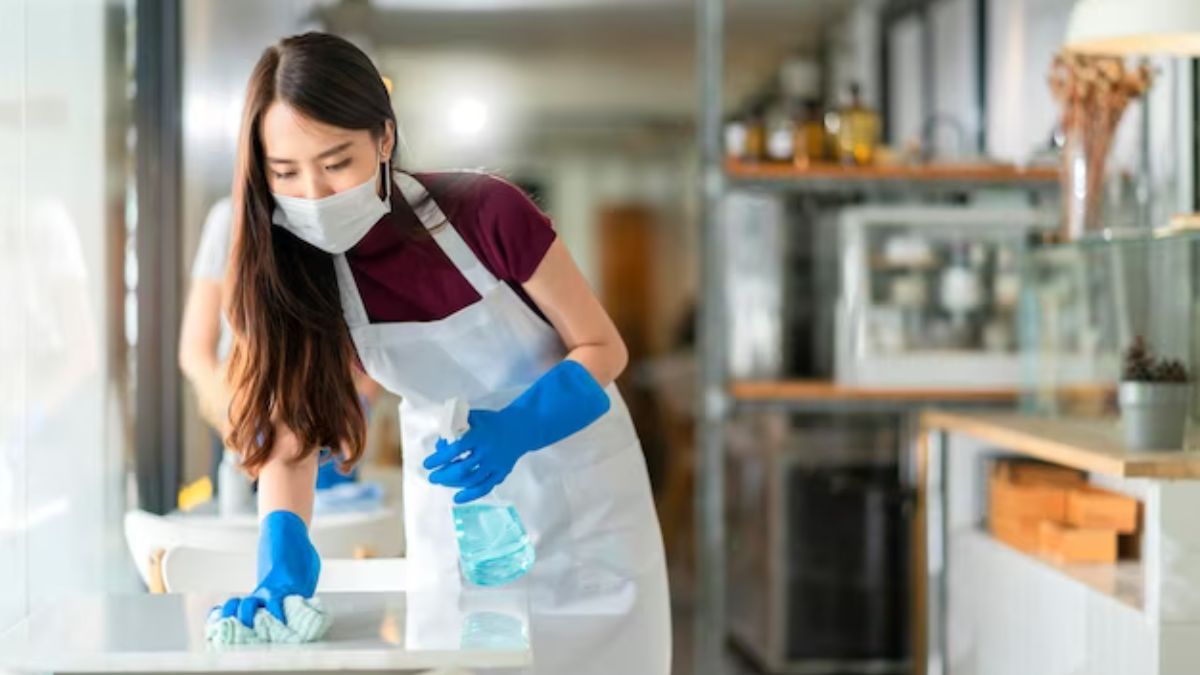Cleanliness is a crucial aspect of any restaurant business. Not only does it affect the overall experience of customers, but it also plays a significant role in ensuring food safety and preventing the spread of diseases. In today’s highly competitive food industry, maintaining high levels of hygiene has become more important than ever before.
In this blog post, we will discuss some best practices for restaurant cleanliness that every restaurant owner and staff should follow to uphold their reputation and provide a safe dining environment for their customers.
Importance of Restaurant Cleanliness
Before we dive into the best practices, let’s understand why cleanliness is of utmost importance in the food service industry. Firstly, maintaining a clean and hygienic restaurant creates a positive impression on customers. A tidy and well-maintained restaurant will attract more customers and keep them coming back, leading to increased profits.
Moreover, keeping the kitchen and dining area clean is crucial for food safety. Unclean surfaces can be a breeding ground for bacteria and other harmful microorganisms, putting consumers at risk of foodborne illnesses. It is not just about following health codes; it is about ensuring the well-being of your customers.
Lastly, a clean restaurant shows professionalism and commitment to quality. It reflects an establishment’s dedication to providing top-notch service and maintaining high standards in all aspects of their business.
Best Practices for Restaurant Cleanliness
Start with Basic Training
As they say, “cleanliness begins at home,” the same applies to a restaurant. The key to maintaining cleanliness in any establishment is by training your staff from the onset. Make sure that all employees, whether front or back of the house, are well-informed and trained on proper hygiene practices.
Train them on basic things like washing hands before handling food, using separate cutting boards for meat and vegetables, and regularly sanitizing surfaces. This will ensure that every staff member understands their role in maintaining restaurant cleanliness and follows proper procedures.
Establish a Cleaning Schedule
Creating a cleaning schedule is crucial to ensure that all areas of the restaurant are cleaned regularly. Divide tasks among your staff, including daily, weekly, and monthly cleaning duties. This can include wiping down surfaces, sanitizing equipment, and deep cleaning of hard-to-reach areas.
Make sure to post the cleaning schedule in a visible location, like the kitchen or staff room, so everyone is aware of their responsibilities and can be held accountable for any missed tasks. Additionally, consider hiring professional cleaners for deep-cleaning services at least once a month.
Keep Personal Hygiene in Check
Personal hygiene is just as important as maintaining a clean environment. Ensure that all employees adhere to personal hygiene practices, such as wearing clean uniforms and hairnets while handling food. Additionally, encourage employees to regularly wash their hands and have hand sanitizer readily available for them.
It is also essential to monitor the health of your staff and have strict policies in place for sick leave. Sick employees should not be allowed to handle food or work in the restaurant until they have fully recovered to prevent the spread of illnesses.
Proper Food Storage and Handling
Proper storage and handling of perishable foods are crucial steps in maintaining cleanliness and preventing contamination. To safeguard your food items, it’s essential to store them at the appropriate temperature, ensuring that bacterial growth is prevented. Additionally, it is of utmost importance that you properly label and store all food items to prevent any cross-contamination.
Training your staff on proper food handling techniques will also be key to maintaining food safety. With so much to consider, it may be wise to consider partnering with sachet filling companies that can provide efficient and safe food packaging solutions, so you can focus on making your restaurant a success.
Regular Pest Control
Pests can be a major issue in the food service industry, causing contamination and damage to property. To prevent this, establish a regular pest control schedule and make sure to seal any cracks or openings that may provide access to pests.
Keep all food storage areas clean and organized to avoid attracting pests. If you notice any signs of infestation, take immediate action to eradicate it and prevent it from happening again.
Maintain Clean Restrooms
The cleanliness of restrooms reflects the overall hygiene standards of a restaurant. Ensure that restrooms are regularly cleaned throughout the day, and have a cleaning checklist in place to ensure nothing is missed.
Make sure to provide hand soap, paper towels, and toilet paper at all times. Regularly check for any plumbing issues or leaks that may cause unpleasant odors or unhygienic conditions.
Conclusion
Maintaining high levels of cleanliness in a restaurant is crucial for the success of any food service business. By following these best practices, you can create a safe and welcoming environment for your customers, boost your reputation, and ensure the well-being of everyone involved in your establishment. Remember, cleanliness is not just a one-time effort but an ongoing commitment to providing top-notch service and maintaining high standards. So, always strive towards achieving the highest levels of cleanliness in your restaurant.
